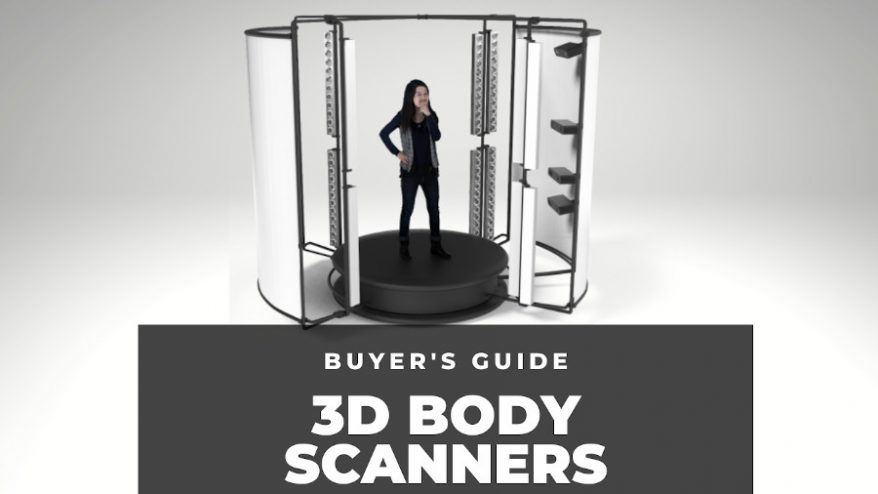
Full 3D Body Scanners – A Full Guide


At 3DSourced we’ve covered everything 3D printing and 3D since 2017. Our team has interviewed the most innovative 3D printing experts, tested and reviewed more than 20 of the most popular 3D printers and 3D scanners to give our honest recommendations, and written more than 500 3D printing guides over the last 5 years.
With each new step in creative technology comes the desire to apply it to viewing and portraying ourselves in new and interesting ways. Traditional artworks brought self-portraits, photography brought selfies, and now, thanks to 3D body scanners, we have what are referred to as 3D selfies.
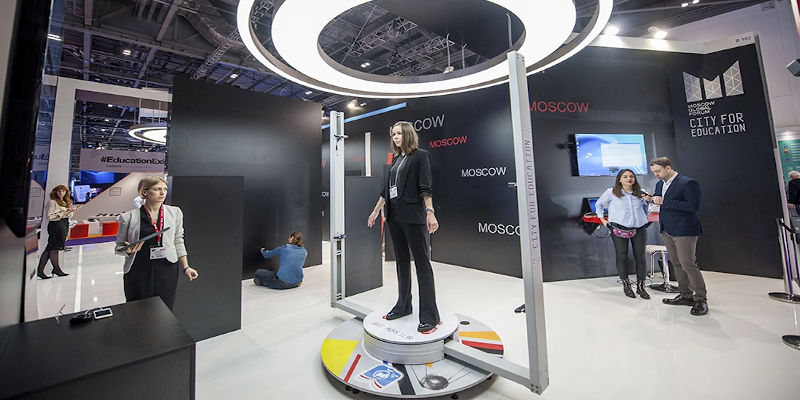
However, 3D body scans are far from solely for vain purposes. As the technology grows and evolves, we’re finding more and more applications for 3D body scanners: from recreational uses, to help with medical diagnoses. Nowadays, it’s even possible to use these 3D body scans for hitting your fitness goals.
Here we’re going to look at what 3D body scanners are, how they work, and what exciting applications they have.
What is a 3D Body Scanner?
3D body scanners are chambers or handheld camera-like devices that scan your entire body. You may recognize these machines if you’ve been through airport security in recent years.
Much like x-rays, but far less invasive, they take detailed scans of the outline of your body, including your clothes. For security purposes, they check for abnormalities in clothing fits to see if anything nefarious is hidden or tucked away. For fitness, they’re used to measure body shape and calculate something similar to a BMI index.
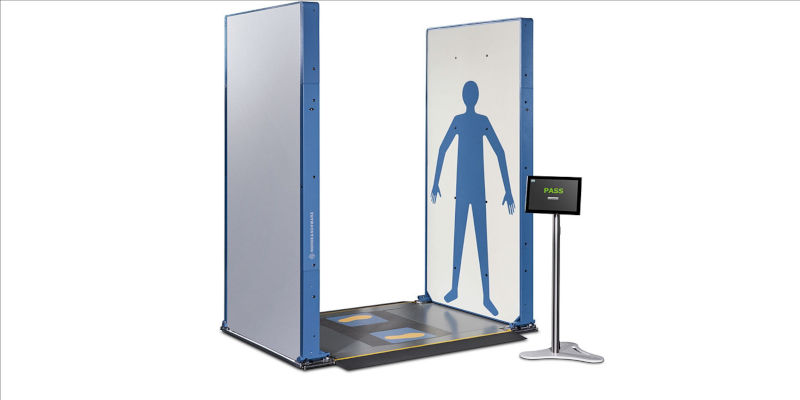
Unlike x-rays, metal detectors, or pat-downs, 3D body scanners simply require you to stand still while a scan renders your shape – including outline and depth – into what’s called a point cloud.
These point clouds are like 3D models the likes of which you may get using a handheld 3D scanner on a smaller object, but on a larger and often more accurate scale. Point clouds are used instead of traditional photographs because they’re more accurate in determining the depth of a body as well as highlighting any surrounding or anomalous objects.
We also have a buyer’s guide for the best 3D scanners in every price range
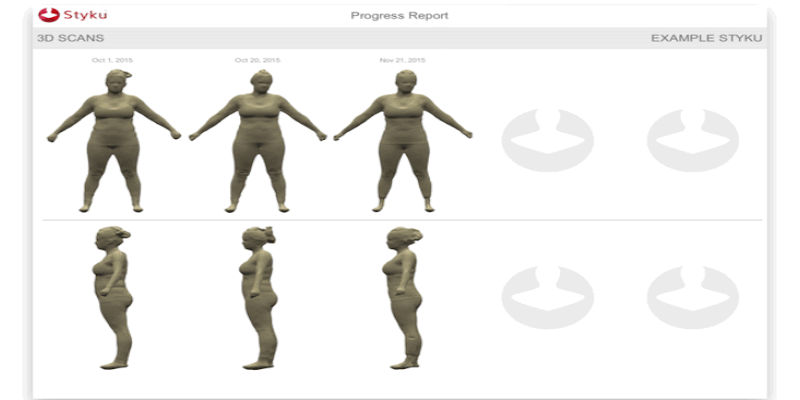
Full 3D body scanners are still relatively new technology, at least as practical tools. This, alongside the large and detailed nature of these 3D body scanners, means they are currently only used in industrial and professional areas. As the technology continues to develop and be further understood, newer and more practical uses are uncovered.
Because they are relatively recent, many people ask just how accurate full 3D body scanners are, a concern deepened by their impressive speed. Most professional scanners are accurate in measuring a body structure to a 1% margin of error, provided the scans are uninterrupted and performed without any outside variables like harsh lighting or dirty lenses.
Applications of 3D Body Scanners
Due to how new full 3D body scanning technology is, its applications are still being researched and discovered. However, 3D body scanners are already being used in many fields for a variety of purposes.
Body Scans for Security
As mentioned above, 3D body scanners are being used in many airport security areas across the world. The point clouds created by full 3D body scans detect a person’s depth and anything they’re wearing or carrying
This is used in security terminals and some government buildings to detect hidden items like weapons, liquids, or anything else that the security personnel should be alerted to. This is good not only for said personnel, but also for the public.
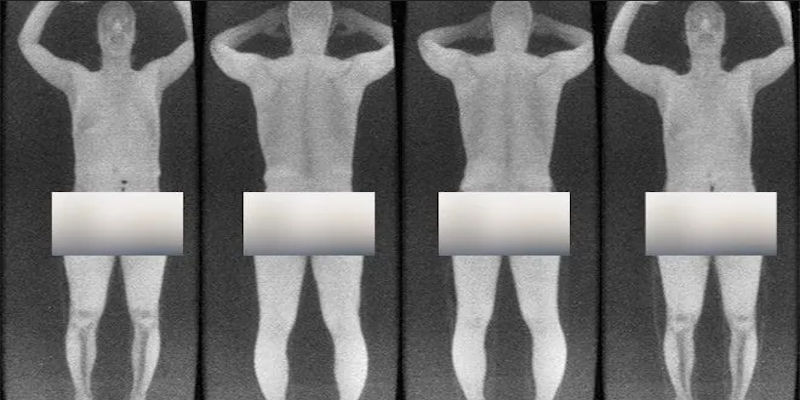
X-rays and pat-downs, while still an occasionally necessary part of the security process, are an uncomfortable and unpleasant experience. Body scanners, however, only need you to stand still while a set of scanners rotate around you, causing no more discomfort than simply raising your arms for a few seconds.
Because these scans produce a 3D body image in a matter of seconds, they are far faster and more comfortable than older security measures.
Body Scans for Fitness
The concept of a home- or doctor-measured BMI have been somewhat controversial due to their inability to take outlying size or age differences into account. This often leads to perfectly healthy people being misdiagnosed as overweight.
Full 3D body scans are used to determine fitness regimes and exercise routines by taking a person’s body fat and muscle percentage, as well as their posture and superficially visible bone structure before comparing the data to their height and age; determining a more realistic and accurate measure of a person’s physical needs and progress towards a healthier body.

For personal use, full 3D body scans are much more reliable than scales, which don’t take the difference between muscle and fat into account, much less your weight. With a 3D body scan, which can be done either professionally or at home, you’ll get a detailed 3D image of your body which includes all of the measurements you’ll need to decide on your future health routines.
These measurements include body ratios between the waist, hip, and thigh, as well as a detailed understanding of your BMI. You will also be able to rotate and examine specific parts of your full body scan for insight into what you could call ‘problem areas’.
Those of you familiar with the similarly used Dual-energy X-ray absorptiometry (DEXA) scans will be happy to know that full 3D body scans are faster, more comfortable, far less invasive, and don’t require you to wear a hospital gown.
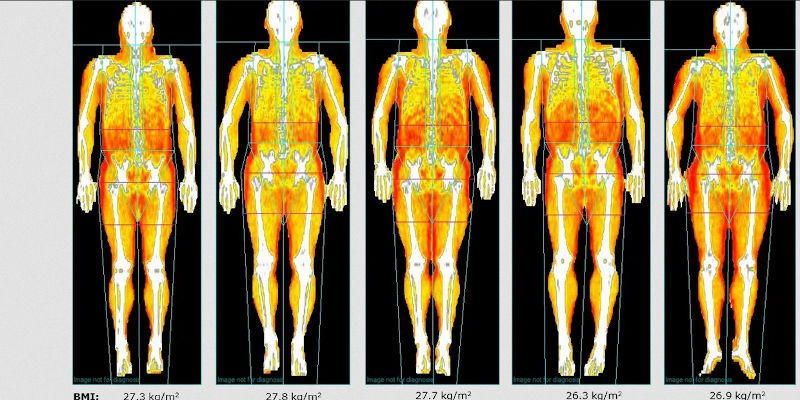
However, as DEXA scans are used for internal analysis to get a clearer image of bone structure, using both DEXA scans and full body 3D scanners in tandem could open new doors for effective and personalized roads to physical fitness.
Some scanners will even perform a risk assessment in general posture and leg favoring, which are often unconscious health risks that many of us overlook in our day-to-day lives.
Medical Applications of 3D Body Scans
Like dental scanners, 3D body scanners provide an excellent way for medical professionals to diagnose problems like scoliosis and create molds and medical tools for corrective procedures. Full body scans can be kept on file and compared over time to evaluate progress on things like physical therapy, posture realignment, and broken bones.
What’s more, these scans can also be used to measure out fittings for prosthetics, casts, and orthopedic aids for joints. The speed and accuracy of these scans are not the only benefit, as the rendered models can be converted into a 3D printable format to make corrective orthopedic casts and aligners.
We also have a feature story on 3D printing in the medical industry
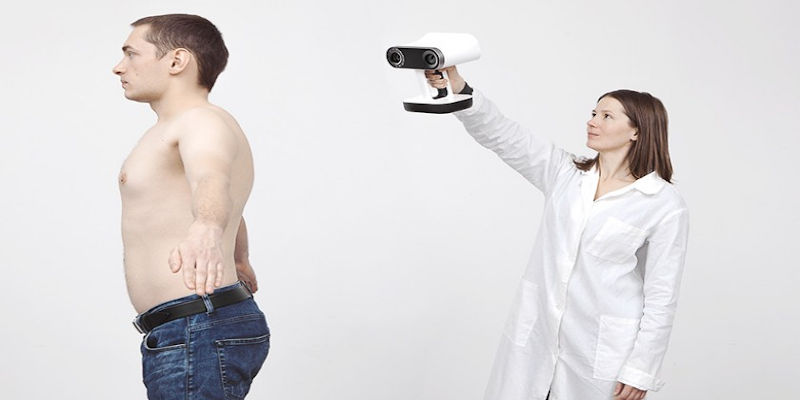
These scans are also useful for elective surgeries, as plastic surgeons and dermatologists can also use them to note problem areas and localize treatments and surgeries for aesthetic enhancing procedures.
As mentioned before, such studies will also come in handy for patients who need to lose weight or focus on specific areas that may be causing them pain.
In addition, 3D body scans can also eliminate incorrect diagnoses faster by ruling out certain problems. Lower back pain is a common symptom of testicular cancer, for example, and a quick physical scan could help in a faster diagnosis by showing how posture and superficially visible bone structure are not the root causes of the pain.
3D Body Scans for Fashion
The time-honored tradition of being measured for a suit may be an old and often familiar custom for many, but only really the first time. Unless you happen to know your tailor well, tailored fittings can be an annoying and time-consuming process.
Because of the accurate scans, measurements for suit and dress fittings are produced in a matter of seconds, giving tailors and seamsters the information they need to get anyone runway-ready in no time.
Read our feature story on 3D printed high fashion
We also have a feature story more generally on 3D printed clothes
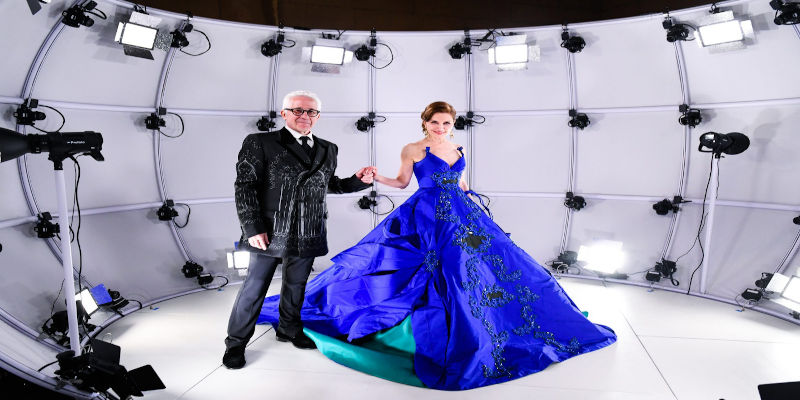
Body Scans for Scientific Research
Scientific research uses control groups and comparative studies to show the differences in things like disease symptoms, physical conditions, treatment methods, and lifestyle consequences.
By taking 3D body scans of a wide range of people of various body types and physical fitness, such comparative studies can be used to determine the best and most efficient procedures and treatments for many medical conditions like back pain, vitamin deficiencies, and even better support regimes for pregnant people.
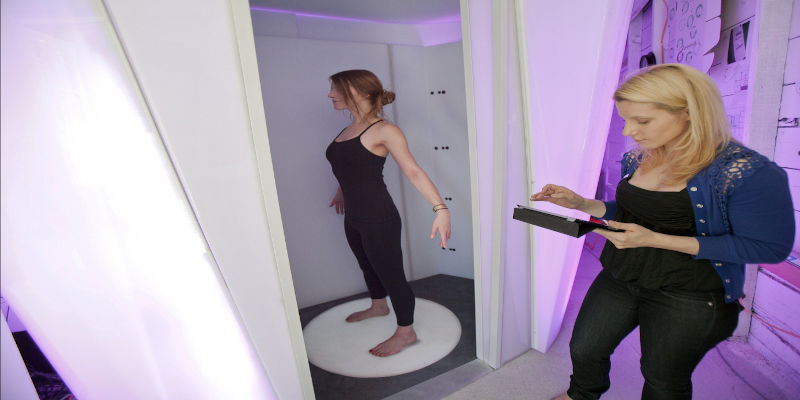
On a broader scale, collecting such body scans add up to a more accurate average, furthering the potential for research to answer more fundamental questions about our physiology and how our bodies function or should function.
3D Selfies
Probably the most fun use for 3D body scanners is the prospect of a 3D selfie.
The models created by a full-body scan can be sent to a 3D printer to make mini figurines that look just like you!
We also have a ranking of the best 3D printers for miniatures
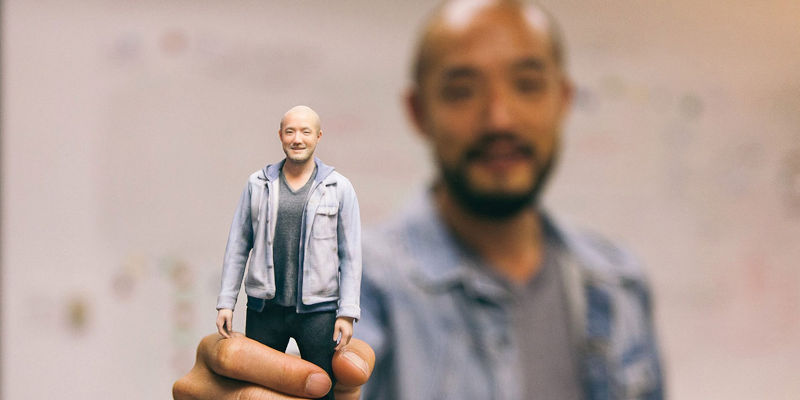
By exporting the files into standard CAD software, you can make statuettes resembling your likeness to a great degree. From mini ornaments for nativity-esque tableaus to toys for the little ones, it’s hard to say no to having a tiny printed you made from an impressively accurate scan.
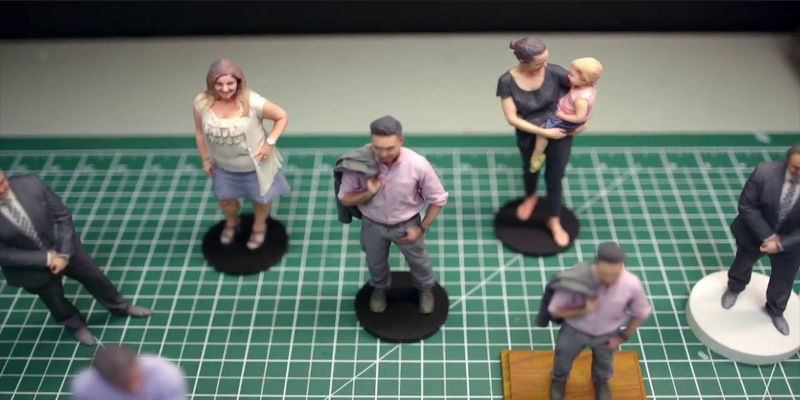
Imagine a wedding cake decorated with an almost exact replica of the bride and groom, or a small version of you in that special occasion outfit that you can hold in your hand. With 3D body scanning for 3D printing, these are very much achievable. With food 3D printers, you can even make an edible you!
Can I Get a 3D Body Scanner?
You may be wondering if you can simply use any 3D scanner or photogrammetry app to perform the same functions. While you could for the purposes of 3D printing, the accuracy in most of these apps would be too low to pick up on the unique differences in physiology.
This means that while you could simply scan yourself with a 3D scanner app, you won’t get the detail needed for fitness or health purposes that the point cloud scans and highly accurate 3D body scanner results will deliver.
We also have a guide to the best 3D scanner apps for your smartphone — most are free!
With all of the great uses listed above, you’re likely wondering if you can get – or at least access – a full-body 3D scanner for yourself. Here we’re going to look at some options for such scanners that you can access at home.
Naked Labs 3D Body Scanner
- Price: $1,395
The Naked Labs scanner is probably the most affordable full 3D body scanner on the market, and is known as the premier in at-home body scanners.
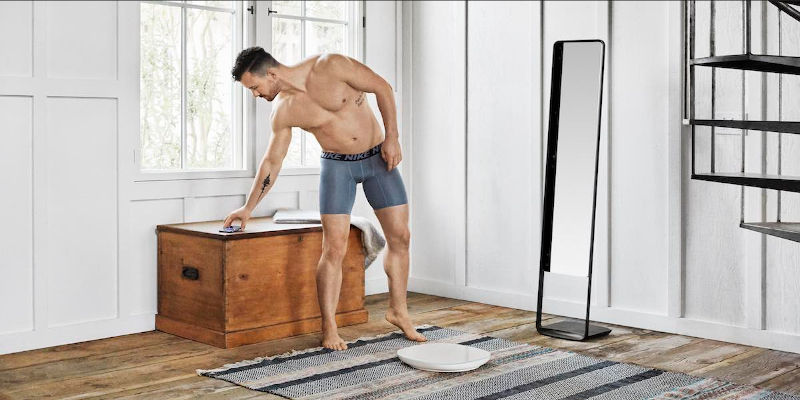
The setup comes with a full-length mirror equipped with cameras, and a scale that you stand on. This scale will slowly rotate as the cameras in the mirror perform a full-body scan. This scan takes your height, posture, and clothing into account and delivers a surprisingly accurate model.
The first scan will provide you with a good starting point, but Naked is designed to be used over time to determine a more accurate comparative model to tell you your body fat percentage, giving how a better idea of how to manage it in a way that suits your fitness goals.
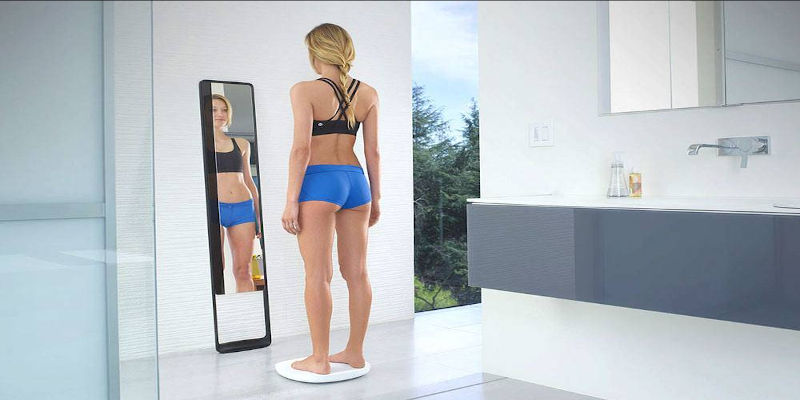
Einscan Pro 2X Plus
- Price: $6,695 — Available on Amazon here / Available on Dynamism here
Einscan has a pedigree in handheld scanners, and their upgraded Einscan Pro 2X Plus is capable of acting as a handheld 3D body scanner for home use. While accurate and lightweight, a full-body scan using the device will need two people.
The person being scanned will need to remain as still as possible, like posing for a portrait, as another person runs the scanner over them. Fortunately, the radius of the scanner is wide enough that this process shouldn’t take too long at all.
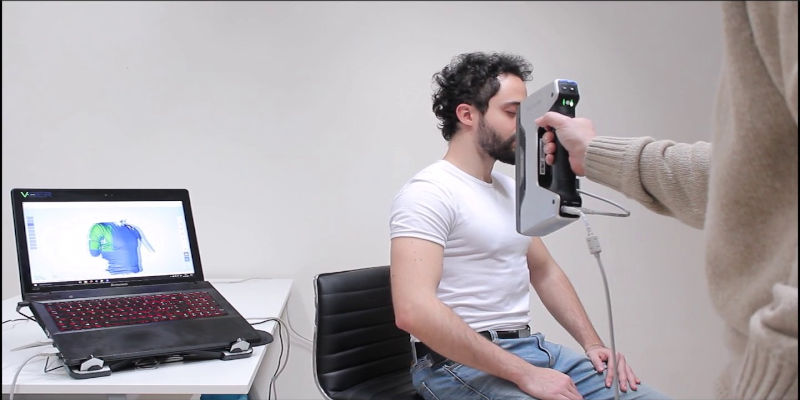
For those of you with limited space who don’t need a new full-length mirror in their bathrooms, the Einscan Pro 2X Plus is the way to go for those who want to make accurate and easy to render 3D body scans.
Styku
- Price: Variable. Quotes available on their website here.
One of the fastest 3D body scanners on the market, Styku is on the more high-end professional services than consumer scanners you can buy on the market.
In a matter of seconds, Styku promises to produce a full, in-depth body scan for fitness purposes, measuring body fat, muscle, and BMI in a model you can rotate and view at your leisure.
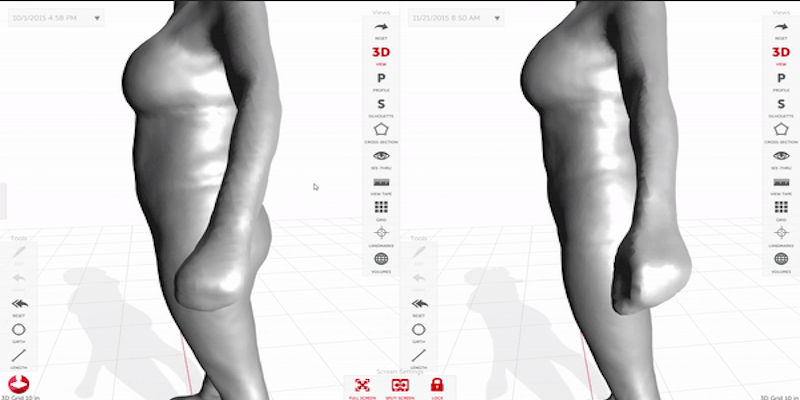
The easy-to-use UI and instantly generate reports help you plan caloric intake and exercise goals to reduce fat, build muscle, or just generally improve physical fitness.
There’s also the option to compare your results and progress with your peers to share advice, though the process is privacy-focused as standards, so your intimate scans won’t be uploaded to any server for all to see, don’t worry.
Styku uses infrared to generate the body scan, meaning it’s perfectly safe for pregnant people to use.
Twinstant Mobile Full Body Scanner
- Price: $29,995
The Twinstant Full Body Scanner looks like something out of Star Trek, but it is exactly what the name indicates.
Twinstant is closer to a 3D photograph studio than a medical- or fitness-oriented scanner, and prides itself on the highly detailed colors, automatic and even light adjustment, and high-resolution detail.
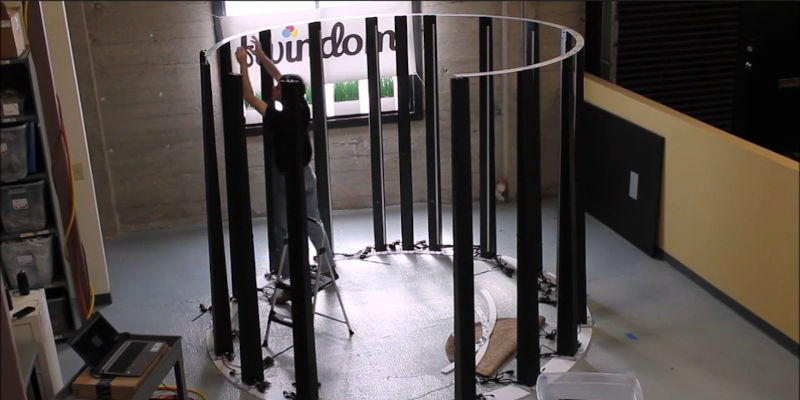
Ideal for things like family portraits or rendering software for personal projects like videogames or media projects, Twinstant is also very easy to use with a simple UI that even the technologically illiterate should be able to use without too much difficulty.
While the price tag may scare most people off, they do offer a variety of payment plans from only $299 a month with a one-year guarantee included.
Other articles you may be interested in:




















